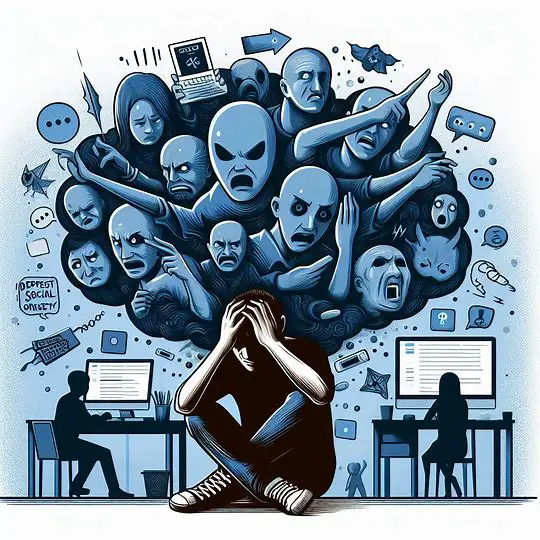Learn effective strategies to manage social anxiety and enhance your interpersonal confidence with our expert guidance.
Table of Contents
Introduction – Social Anxiety
Social anxiety disorder, also known as social phobia, is characterized by overwhelming anxiety and excessive self-consciousness in everyday social situations. It is a prevalent condition that can disrupt daily routines, impede performance at work or school, and make it difficult to form and maintain relationships. This chronic fear of being watched and judged by others can lead to feelings of inadequacy, inferiority, embarrassment, humiliation, and depression.
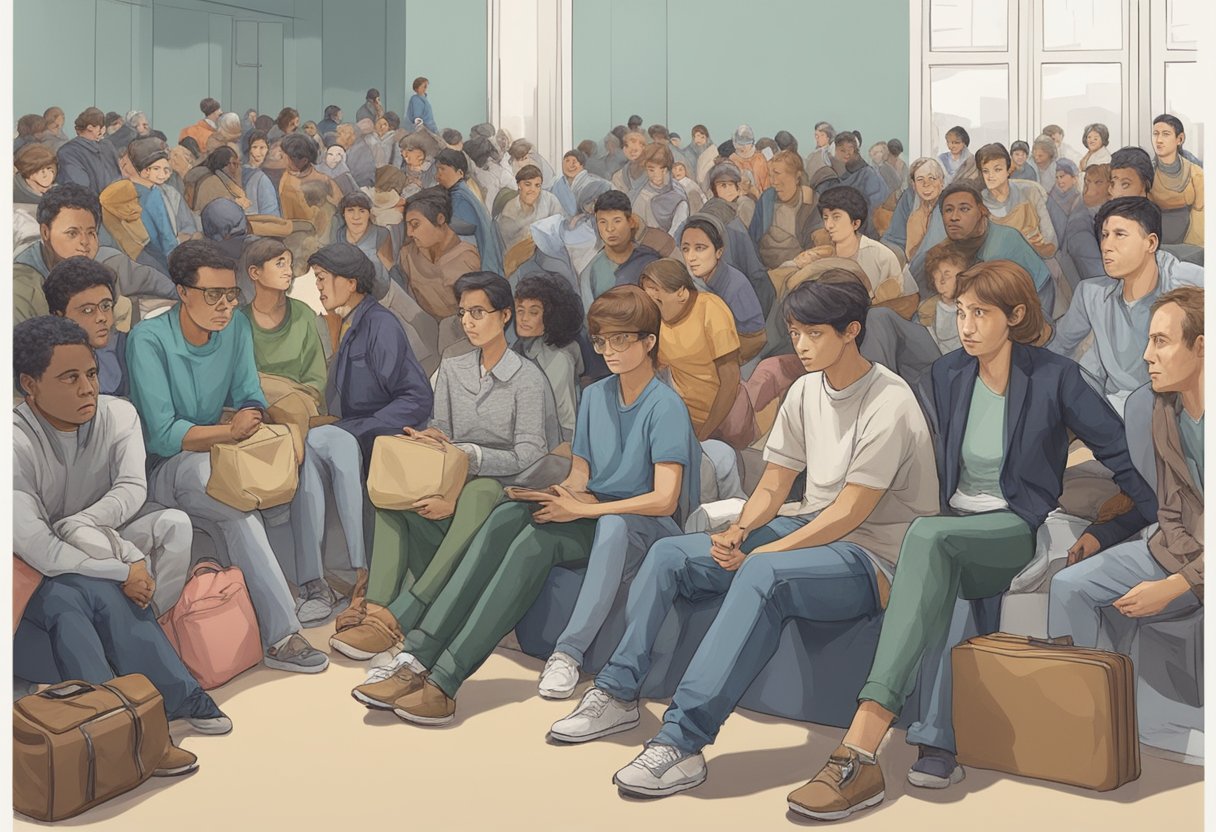
The roots of social anxiety are often complex and can be attributed to a combination of genetic, psychological, and environmental factors. While the exact cause is not fully understood, studies suggest that a history of negative social experiences, family background, and underlying brain structure may contribute to the development of the disorder. Diagnosing social anxiety involves careful evaluation by healthcare professionals, and while there is no definitive prevention method, early intervention and social skills training may help reduce the progression of symptoms.
Treatment options for social anxiety are diverse, ranging from cognitive-behavioral therapy, which is highly effective at helping individuals challenge negative thoughts, to medications that can help manage the physiological effects of anxiety.
Key Takeaways
- Social anxiety disorder involves intense anxiety in social situations and significant distress that impairs daily functioning.
- It arises from a complex interplay of genetic, psychological, and environmental factors.
- Treatment options are available to manage and alleviate symptoms, including cognitive-behavioral therapy and medication.
Understanding Social Anxiety
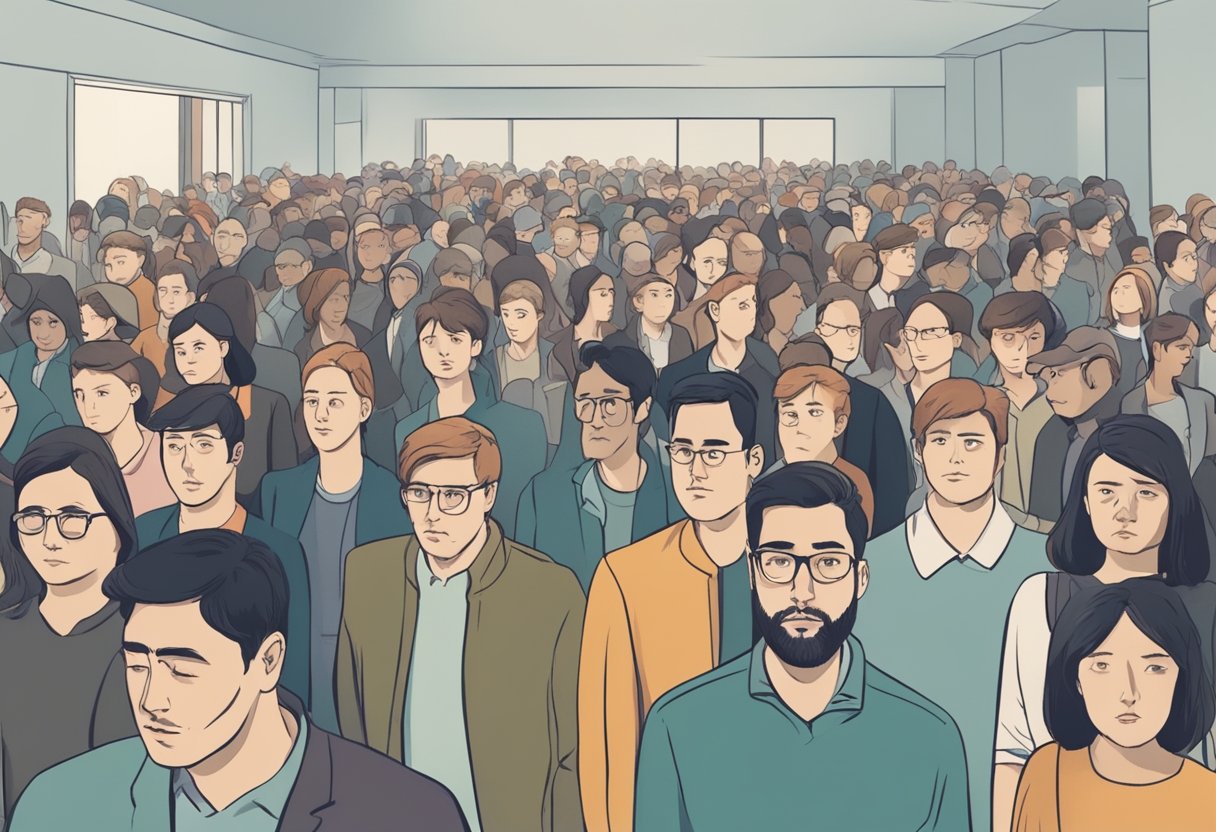
Social anxiety disorder is a significant challenge affecting the lives of many individuals. It’s characterized by an intense fear of social situations and can manifest in a variety of ways, from subtle to severe.
Definition and Types
Social Anxiety Disorder (SAD), also known as social phobia, is an anxiety disorder characterized by overwhelming anxiety and excessive self-consciousness in everyday social situations. People with SAD may experience strong fear of being judged or scrutinized by others. There are two types of social anxiety: specific and general. Specific social anxiety refers to anxiety in response to particular situations, such as speaking in public. In contrast, general social anxiety is more diffuse, with sufferers feeling anxiety across a range of social interactions.
Symptoms and Common Behaviors
Symptoms of social anxiety disorder can be broadly divided into emotional and behavioral categories. Emotional symptoms include intense fear of social situations, fear of being judged, and fear of embarrassment. Behaviorally, individuals may demonstrate avoidance of social situations, difficulty speaking, trembling, sweating, or experiencing a racing heart in social settings. Unlike shyness, which is short-lived and doesn’t disrupt one’s life, social anxiety disorder impairs one’s ability to function in daily life.
| Key Findings | Related Keywords |
|---|---|
| Individuals with SAD often avoid social interactions | Avoidance, Anxiety Disorder |
| Fear of judgment and negative evaluation are core aspects of SAD | Fear, Social Anxiety Disorder |
| SAD can manifest as a fear of specific situations or a general fear of social interaction | Specific, General |
For more detailed information on social anxiety disorder and its management techniques, refer to the Anxiety and Depression Association of America, Mayo Clinic, and National Institute of Mental Health.
Causes and Risk Factors
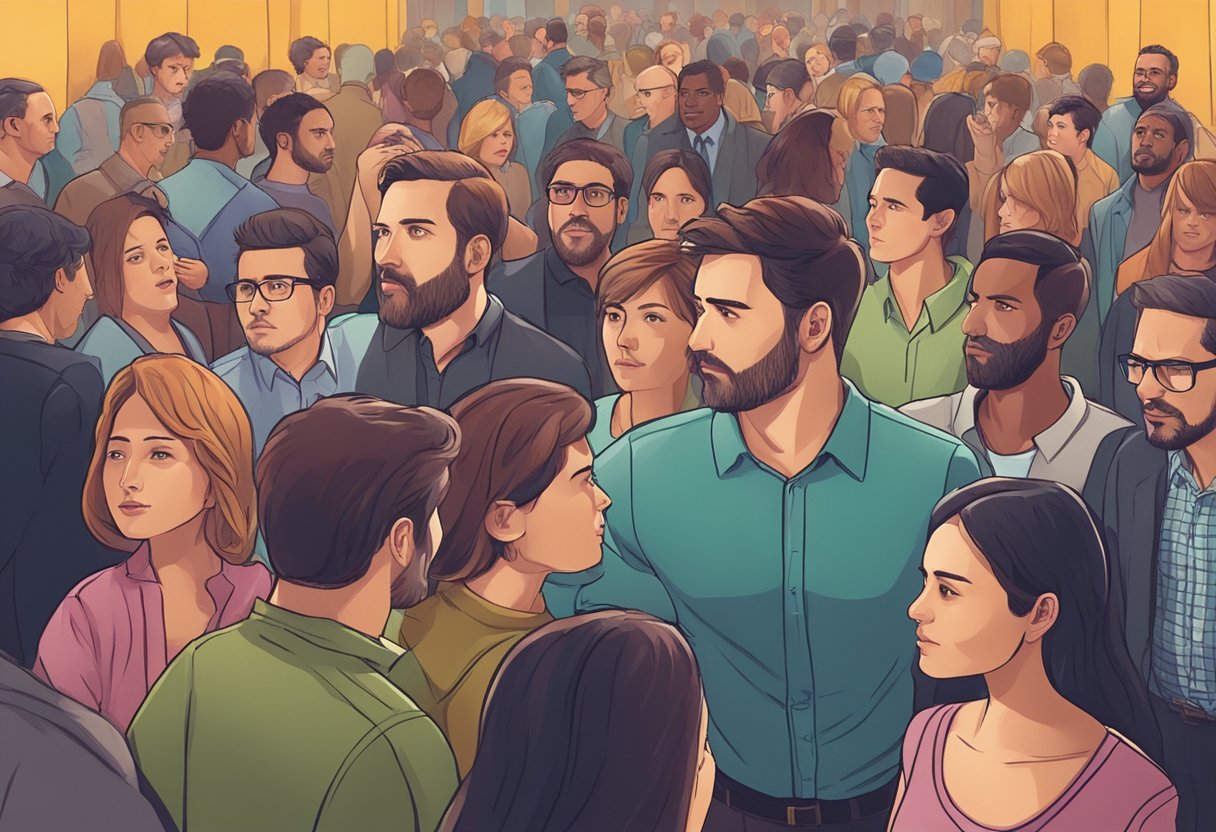
Understanding social anxiety disorder requires a look into the various causes and risk factors that contribute to its development. It’s not simply a product of one’s immediate environment or experiences; a complex interplay of genetic, environmental, and temperamental factors during childhood and teenage years shapes the likelihood of an individual developing this condition.
Genetic and Environmental Factors
Genetic predisposition plays a critical role in the development of social anxiety disorder. Studies suggest that individuals with family members who have the disorder are more prone to experience it themselves. The Mayo Clinic outlines a clear association between social anxiety disorder and family history.
On the environmental side, an individual’s upbringing, including parenting styles that are overly controlling or protective, can increase the likelihood of developing social anxiety. As per the Cleveland Clinic, the analysis of environmental factors includes how parents model behavior in social situations.
| Source | Key Findings |
|---|---|
| Mayo Clinic | Genetic links to social anxiety disorder suggest a hereditary factor. |
| Cleveland Clinic | Parental behavior and overprotectiveness could contribute to the development of social anxiety. |
Development and Temperament
Children who exhibit a shyer temperament in early life can be more susceptible to social anxiety, particularly as they navigate the challenges of their teenage years. The emergence of social anxiety is sometimes seen in conjunction with significant social or performance-related stressors that occur during critical developmental periods. According to Yale Medicine, the intense fear of judgment or rejection in social settings characteristic of social anxiety can severely impact participation in social events.
| Source | Key Findings |
|---|---|
| Yale Medicine | A temperament that includes intense fearfulness can make individuals retreat from social interactions. |
Impact on Daily Life

Social anxiety profoundly affects an individual’s everyday experiences, particularly in how they interact with others and perform in various settings like work and school. Here, we explore the specific ways in which social anxiety influences relationships, professional life, educational experiences, and social interactions.
Relationships and Work
People with social anxiety often face challenges in building and maintaining relationships due to a pervasive fear of judgment. They might experience an intense anxiety about interactions with colleagues, potentially leading to a decline in professional relationships and productivity. Over time, this can affect their career advancement and quality of life. In the workplace, individuals with social anxiety might avoid participating in meetings or networking opportunities, which are critical for professional growth.
School and Social Interactions
For students, social anxiety can significantly disrupt their educational journey. They may struggle with public speaking or group work, influencing their academic performance and social situations at school. Affected individuals might also avoid or isolate themselves from social events and peer interactions, which are integral to a fulfilling school experience. This isolation can contribute to a lower quality of life and hinder the development of essential social skills.
| Key Findings | Source URL |
|---|---|
| Persistent fear of judgment affects relationships and work | https://socialanxietyinstitute.org/living-with-social-anxiety |
| Anxiety in the workplace can hinder professional growth | https://lifemd.com/learn/living-with-social-anxiety-disorder-causes-symptoms-and-treatment |
| Challenges in school due to avoidance of public speaking | https://www.ncbi.nlm.nih.gov/pmc/articles/PMC7028452/ |
| Related Keywords |
|---|
| Relationships |
| Work |
| School |
| Quality of life |
| Isolation |
| Social situations |
Treatment Options
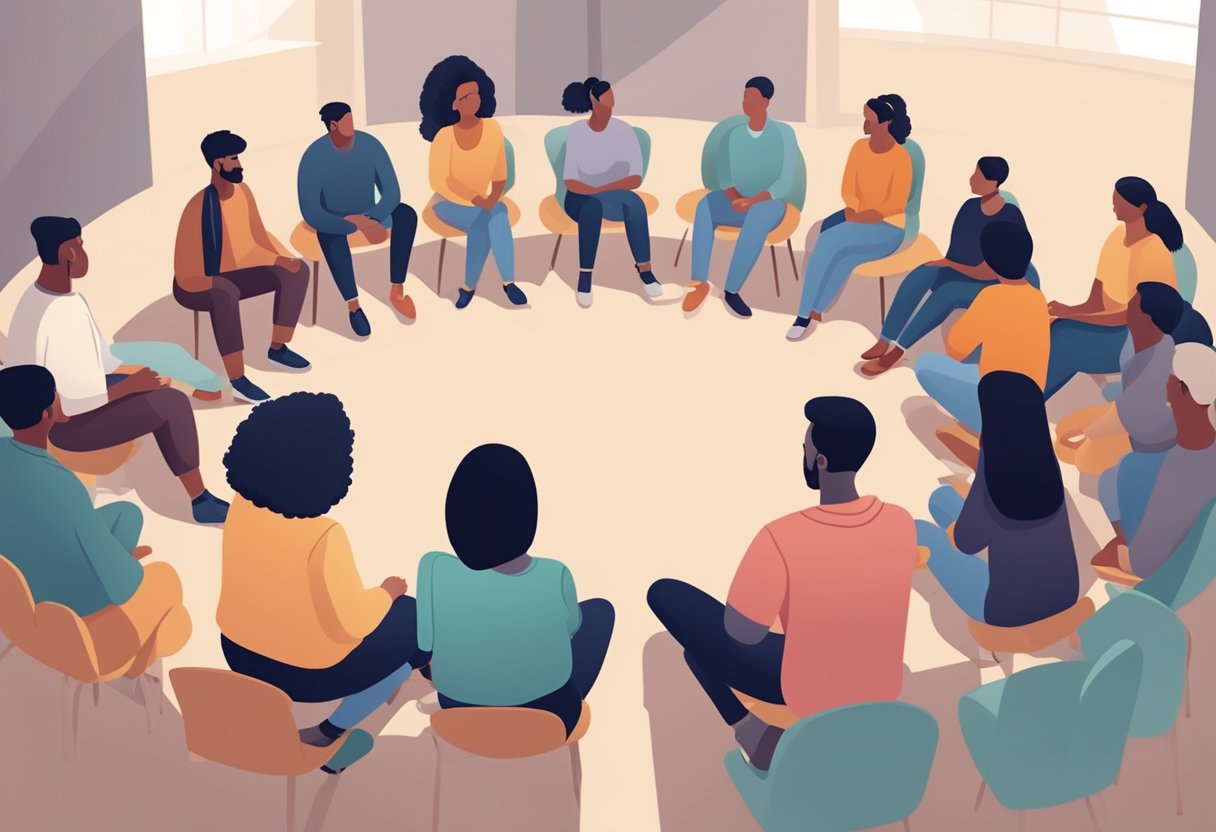
Effective management of social anxiety disorder typically involves therapy and medication, tailored to individual needs. In addition to professional treatment, self-help strategies and support from peers can facilitate coping and recovery.
Therapy and Medication
Cognitive Behavioral Therapy (CBT) is widely recognized as an effective treatment for social anxiety disorder. It helps individuals identify and challenge negative thought patterns, ultimately improving self-esteem and reducing anxiety in social situations. Medications, like Selective Serotonin Reuptake Inhibitors (SSRIs), can also be prescribed to alleviate symptoms; they work by increasing the levels of serotonin in the brain, which has a calming effect on mood.
| Therapy Types | Medications | Relevant URLs |
|---|---|---|
| Cognitive Behavioral Therapy (CBT) | Selective Serotonin Reuptake Inhibitors (SSRIs) | Treatments for Social Anxiety |
| Exposure Therapy | Serotonin-Norepinephrine Reuptake Inhibitors (SNRIs) | |
| Group Therapy | Benzodiazepines |
Self-Help and Support
Individuals with social anxiety can also engage in self-help activities that complement professional treatment. Regular physical exercise and adequate sleep are key for managing stress levels. Support groups offer a sense of community and understanding, which can be invaluable for individuals feeling isolated due to their anxiety disorders.
| Self-Help Strategies | Support Mechanisms |
|---|---|
| Stress-reduction skills | Support Groups |
| Physical exercise | Peer Support |
| Proper sleep | Family Understanding |
For a detailed overview of treatments, readers may look into the guides and research provided by the Mayo Clinic and National Institute of Mental Health (NIMH).
Diagnosis and Prevention
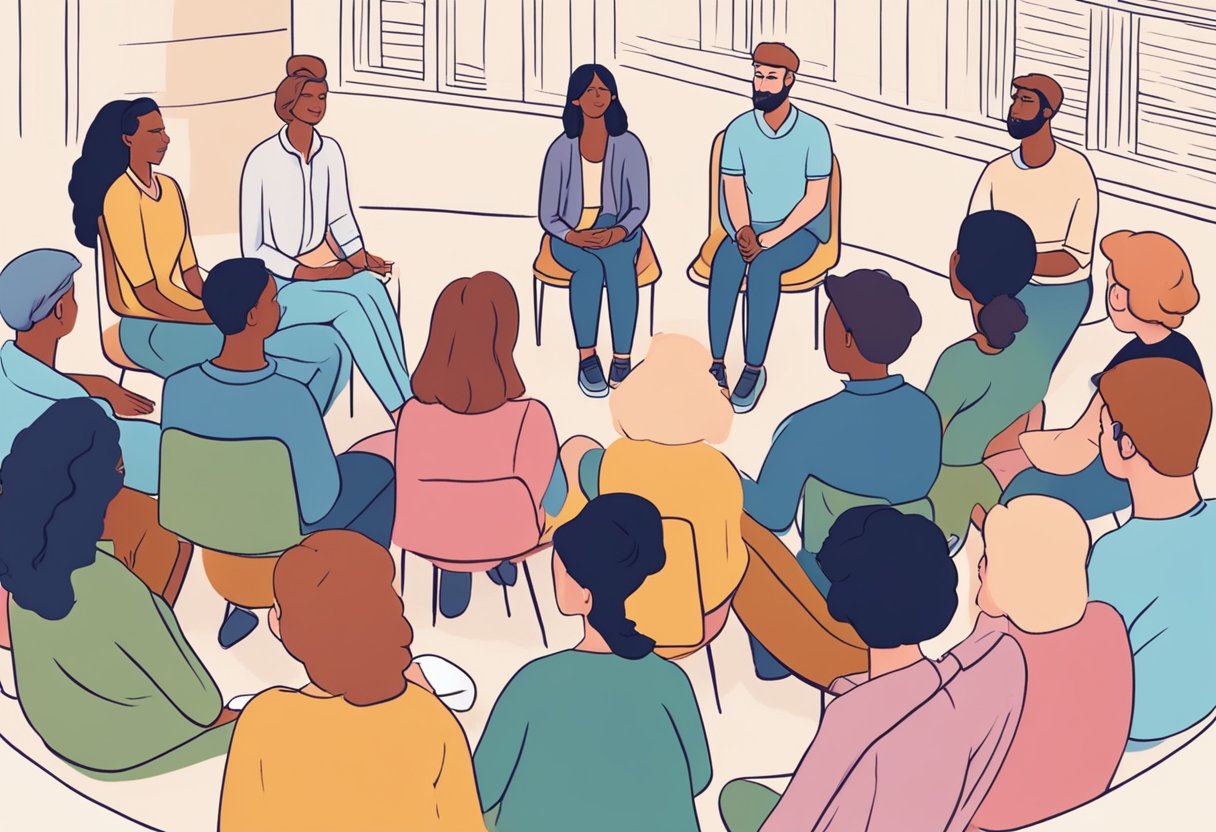
Proper diagnosis and targeted prevention are pivotal in managing social anxiety disorder. Doctors rely on specific criteria from the DSM-5 for diagnosis, while individuals can adopt prevention strategies to mitigate symptoms.
Identifying Social Anxiety
A diagnosis of social anxiety disorder is typically given by a healthcare professional when individuals consistently experience intense fear or anxiety in social situations. Criteria laid out in the Diagnostic and Statistical Manual of Mental Disorders (DSM-5) are used, which include persistent fear of embarrassment or judgment in social interactions. Diagnosing social anxiety requires a thorough evaluation, as its symptoms can overlap with other mental health conditions.
Strategies for Prevention
While prevention of social anxiety disorder might not always be possible, implementing certain strategies can reduce its impact. Regular physical exercise and stress-reduction techniques are recommended. Others find that maintaining a stable sleep schedule can be helpful. It’s also important to address social anxiety symptoms early, as they can intensify over time.
| Key Strategy | Description | Relevance to Social Anxiety | Source |
|---|---|---|---|
| Learn Stress-Reduction | Engaging in relaxation techniques to lower anxiety levels. | Prevention | Mayo Clinic |
| Regular Physical Exercise | Consistent physical activity to help alleviate symptoms. | Prevention | Cleveland Clinic |
| Adequate Sleep | Ensuring sufficient rest to improve overall mental health. | Prevention | Everyday Health |
Frequently Asked Questions
This section aims to answer common queries associated with social anxiety disorder, addressing its symptoms, treatments, and coping mechanisms.
What are common treatments for social anxiety?
Treatments for social anxiety typically include cognitive-behavioral therapy (CBT), which can help alter negative thought patterns, and medication such as SSRIs or antidepressants to manage symptoms. For some individuals, a combination of therapy and medication yields the best results. Learn more about treatments for social anxiety at the Mayo Clinic website.
What does social anxiety feel like?
Persons with social anxiety might experience a heightened fear of judgment or scrutiny in social. These feelings can be pervasive and debilitating, often leading to avoidance of social interaction. Insight into personal experiences with social anxiety can be gleaned from the narratives at HealthCentral.
What are the symptoms of social anxiety?
The symptoms of social anxiety disorder often include intense nervousness, rapid heart rate, excessive sweating, and stomach trouble before or during social interactions. Sometimes, these symptoms can be so severe that they interfere with a person’s daily life. Find a list of symptoms at Cleveland Clinic’s website.
Can social anxiety be cured or managed effectively?
While social anxiety cannot always be cured, it can often be managed effectively with proper treatment. Long-term management can lead to significant improvement and a decrease in symptoms, allowing individuals to function better in social situations. The NIMH offers further details on managing social anxiety.
How can one cope with social anxiety in daily life?
Coping with social anxiety in everyday situations may involve using relaxation techniques, such as deep breathing, preparing for social encounters by going through possible scenarios, and gradually facing feared social situations. For practical tips on overcoming daily social anxiety, visit Positive Psychology.
What causes social anxiety disorder?
Social anxiety disorder can stem from a variety of factors, including genetics, brain structure, and environmental influences. It often emerges during the teenage years and may be connected to experiences like bullying or familial attitudes towards social behavior. Comprehensive information regarding causes can be found at the Cleveland Clinic’s resource page.
| Keywords | Related Information | Source URL |
|---|---|---|
| Cognitive-behavioral therapy | A common treatment for social anxiety that helps change thought patterns. | Mayo Clinic |
| Symptoms | Includes feelings of intense nervousness and physical reactions like rapid heartbeat. | Cleveland Clinic |
| Management strategies | Techniques include relaxation exercises and facing feared social scenarios. | Positive Psychology |
| Genetics and environment | Factors contributing to the onset of social anxiety disorder. | Cleveland Clinic |

